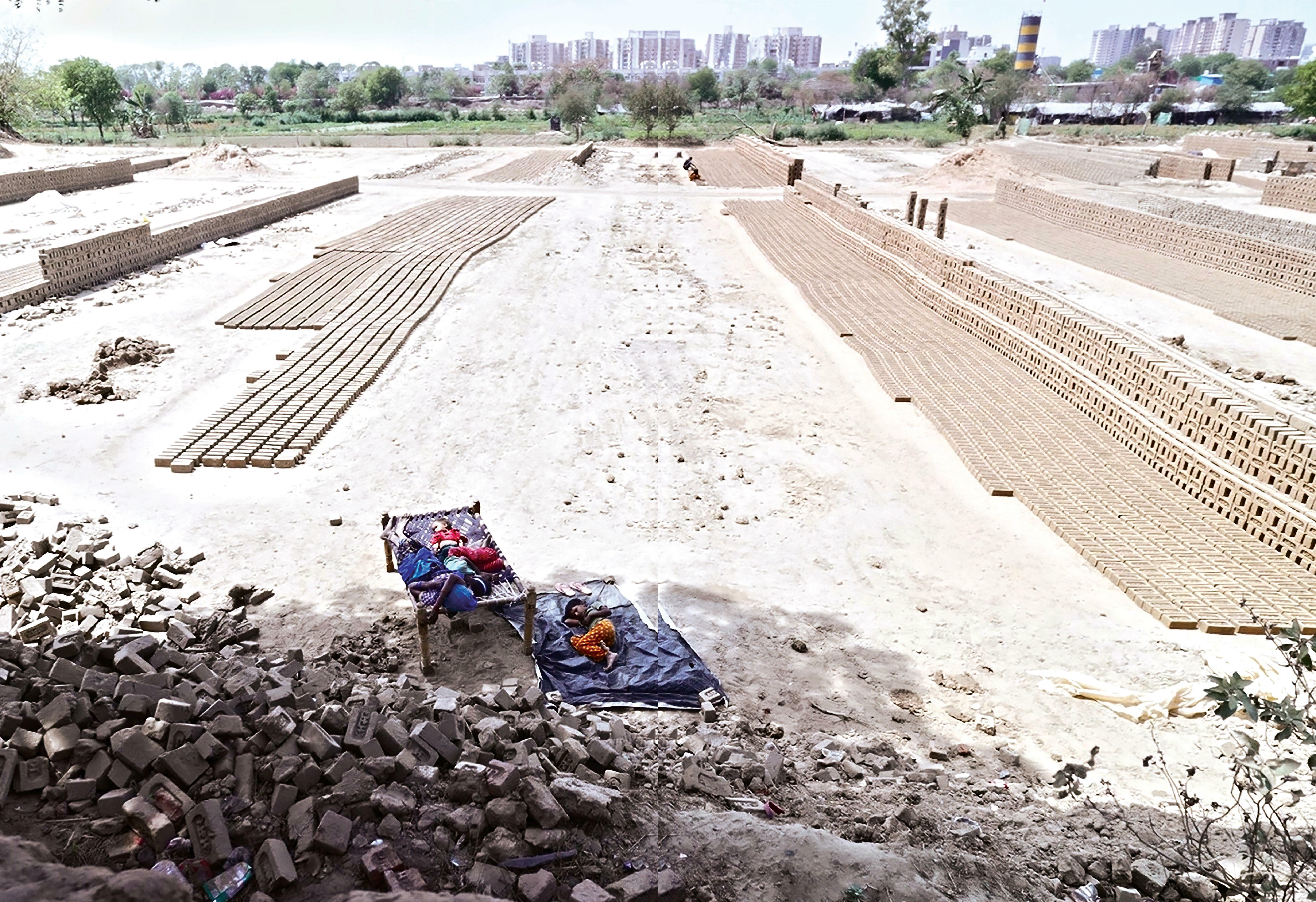Prøve GULL - Gratis
BLAZING SUN IS ON
Down To Earth
|May 01, 2024
Rising temperatures are testing the limits of human tolerance to heat. With their predominantly built-up landscape, urban areas offer no respite. A study by the Centre for Science and Environment on the morphology and heat patterns of nine Indian cities over the past decade shows how these urban centres are turning into heat islands with a potentially serious impact on human health. An analysis by Rajneesh Sareen, Mitashi Singh and Nimish Gupta, with Shagun in Haryana and Kiran Pandey

BIRESH KUMAR, a 38-year-old labourer, works at least six hours in the sun every day. Though it is only mid-April-early days of summer in north India-the afternoon temperatures hover around 38°C in Bhopani, the village in Haryana's Faridabad district where Kumar works at a brick kiln. When the summer peaks in May-June, the mercury will likely cross 40°C. "I feel like I'm trapped in a heat island. But I have to work to repay a debt I owe to the labour contractor," says Kumar.
Sitting on a cot under a tree at some distance is Kumar's co-worker Somveer. For the past two days, Somveer has had body ache, weakness and fever, which have forced him to miss work and, as a result, forego his wage. He does not know the reason for his condition, but says it could be due to constantly working under the sun. The National Institute for Occupational Safety and Health, US, recommends that those who work in the heat should consume 237 ml of water every 15-20 minutes. But for workers like Kumar and Somveer, that would mean more breaks and missed targets, resulting in a loss of wage. Neeraj Kaushik, medical officer in-charge at the government hospital in Kheri Kalan that Somveer and Biresh have access to, says he sees several labourers with complaints of fainting episodes. "They are weak and dehydrated, with severely chapped lips. If they have comorbidities, like diabetes, it becomes an emergency situation. If their vitals are weak, it takes a long time to resuscitate them," he says.

Denne historien er fra May 01, 2024-utgaven av Down To Earth.
Abonner på Magzter GOLD for å få tilgang til tusenvis av kuraterte premiumhistorier og over 9000 magasiner og aviser.
Allerede abonnent? Logg på
FLERE HISTORIER FRA Down To Earth

Down To Earth
COP OF TALK
The UN's 30th climate summit, COP30 in Belém, was billed as the COP of truth and implementation.It was an opportunity for the world to move beyond diagnosis to delivery. Instead it revealed a system struggling to prove its relevance.
14 mins
December 01, 2025
Down To Earth
1,500 days, and an alarm for new climate
SEASONS ARE the compass that guide humans to survive and thrive as a society. What happens if seasons lose their distinct character and predictable rhythm? This is no longer a theoretical question. The Earth is entering a new climate regime, its atmosphere now saturated with greenhouse gases at levels without precedent in human history. And the earliest sign of this shift is the near-dissolution of familiar seasons; all merging and dissipating like the pupa inside the chrysalis, but, not to give birth to that mesmerising butterfly. This metamorphosis is manifest in the blizzard of weather events, extreme in severity and unseasonal by nature and geography.
2 mins
December 01, 2025

Down To Earth
Rights in transit
A recent dispute over transport and trade of kendu leaves in Odisha highlights differing interpretations of forest rights laws in the state
6 mins
December 01, 2025
Down To Earth
Roots of peace
Kerala's forest department plants fruit and fodder trees to ease human-wildlife tensions
2 mins
December 01, 2025

Down To Earth
Flattened frontiers
Efforts to reclaim degraded land from Chambal ravines expose both people and biodiversity to ecological risks from erosion and flooding
5 mins
December 01, 2025

Down To Earth
INDIA'S DRY RUN
India is poised to be a global hub of data centres—back-end facilities that house servers and hardware needed to run online activities.
21 mins
December 01, 2025

Down To Earth
Bangla generic drugs to the rescue
A buyer's club for generic cystic fibrosis drugs sourced from Bangladesh highlights the country's laudable pharma development
4 mins
December 01, 2025

Down To Earth
Direct approach
A new direct cash transfer scheme as well as decades of women-centric programmes yield an electoral windfall for the ruling alliance in Bihar
5 mins
December 01, 2025

Down To Earth
HIDDEN RESOURCE
Punjab's 1.4 million abandoned borewells offer a chance to mitigate flood damage and replenish depleting groundwater
4 mins
December 01, 2025
Down To Earth
Corporate bias
INDIA'S DRAFT Seeds Bill, 2025, introduced by the Centre in mid-November, proposes a few key changes.
1 min
December 01, 2025
Listen
Translate
Change font size
